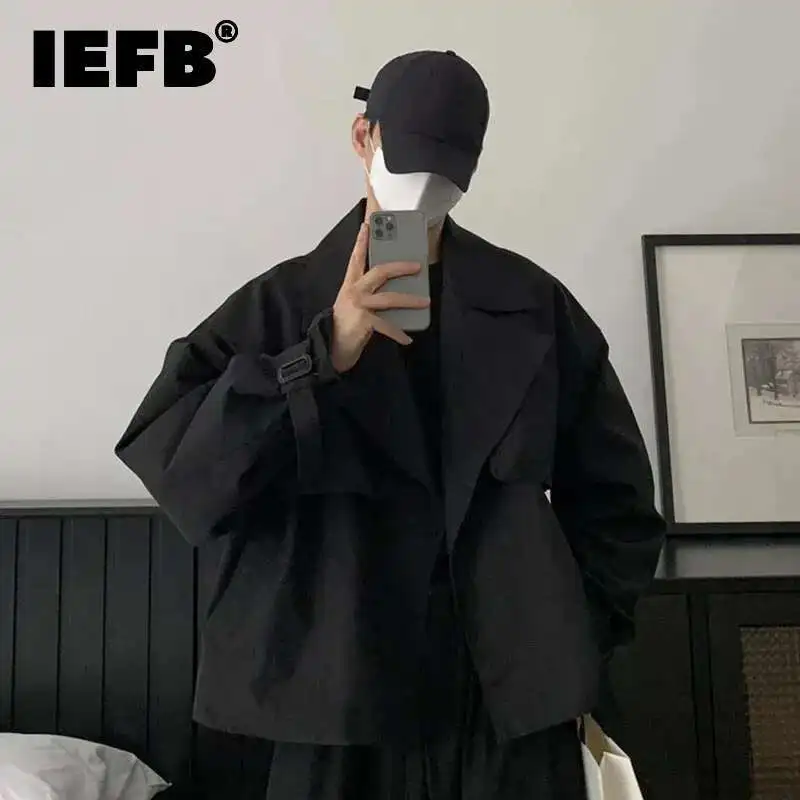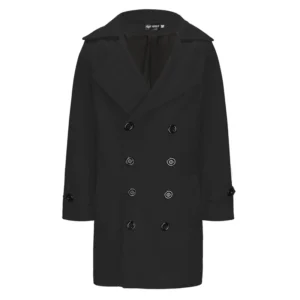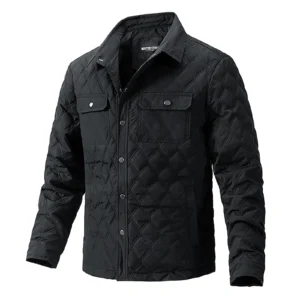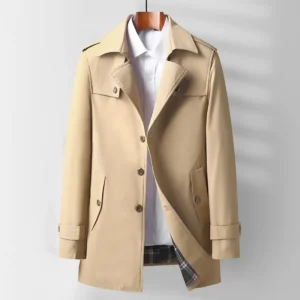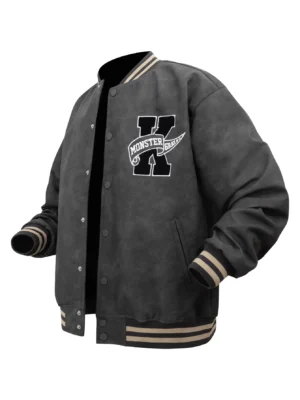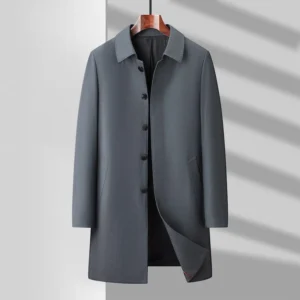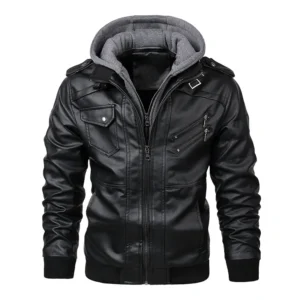Introduction: Why Coat Length Matters for Shorter Men
For men of shorter stature, finding outerwear that truly flatters can be challenging. The wrong coat length can create proportion issues, overwhelm your frame with excess fabric, and even make you appear shorter than you actually are. While the average male height in the US is about 5‘9” (175 cm), with “short” often referring to men 5‘8” (173 cm) or under, it’s not your height that matters most—it’s how well your clothes fit your proportions.
Coat length is particularly crucial because outerwear tends to be the most visible part of your wardrobe, especially during colder months. A well-proportioned coat creates a harmonious silhouette that can visually enhance your height and overall appearance, while an ill-fitting one can do just the opposite.
Throughout this guide, you’ll discover ideal coat lengths for different body types, the best coat styles for shorter frames, critical fit elements, and practical tailoring advice. Understanding the fundamental principles of choosing right coat length creates the foundation for a more flattering and confident appearance, regardless of your height.
Understanding Proportions: The Foundation of Flattering Outerwear
When it comes to dressing well as a shorter man, understanding body proportions matters far more than absolute height. Outerwear can either enhance your natural proportions or disrupt them, depending on how well it’s sized and styled.
The golden ratio concept (approximately 1:1.618) applies to menswear just as it does to architecture and art. For men’s clothing, the ideal visual ratio between upper and lower body creates harmony and balance. A properly proportioned coat respects this balance by:
- Creating clean vertical lines that elongate your silhouette
- Maintaining the right torso-to-leg proportion
- Avoiding visual breaks that cut your body in unflattering places
- Complementing your natural body shape rather than overwhelming it
The key insight is that coat length should establish visual harmony while creating the illusion of height. When a coat ends at the right point, it naturally divides your body in pleasing proportions, making the entire outfit look intentional rather than awkward.
Understanding these basic principles of mens coat length guide will help you make smarter choices about which styles and cuts will work best for your particular body type.
Ideal Coat Lengths: A Complete Guide for Different Body Types
Finding the perfect coat length is about understanding which proportions work best for your specific height and build. Here’s a comprehensive breakdown of ideal coat lengths for shorter men:
Hip-length coats (26-30 inches/66-76 cm from shoulder seam):
* Creates the longest possible leg line, making this ideal for very short men
* Perfect for casual settings and everyday wear
* Naturally flattering on most body types without any modifications
* Best for men under 5‘6” (168 cm) who want to maximize perceived height
Mid-thigh length coats (30-33 inches/76-84 cm from shoulder seam):
* The most versatile option for shorter men, offering good balance between coverage and proportion
* Works across most body types and occasion types
* Creates clean lines while still providing adequate coverage
* Ideal for men between 5‘6” and 5‘8” (168-173 cm)
Above-knee coats (33-35 inches/84-89 cm from shoulder seam):
* The maximum length that can work well if properly tailored
* Should end 1-2 inches above the knee—never below
* Works best on men with longer torsos relative to their legs
* Can be suitable for men up to 5‘8” (173 cm) with the right proportions
Your specific body shape also affects which length works best within these categories. Athletic builds can often handle slightly longer coats, while slim builds look best with trimmer, shorter styles. Stockier builds benefit from a length that creates clean vertical lines without adding visual bulk.
Finding the perfect coat length for height is about balance and proportion rather than strict rules. Many shorter men discover that selecting coats that make you look taller becomes intuitive once they understand these basic principles.
Best Coat Styles for Short Men: Matching Style with Ideal Length
Different coat styles naturally lend themselves to different lengths, making some inherently more flattering for shorter men. Here’s a breakdown of the most suitable styles and their ideal lengths:
| Coat Style | Ideal Length | Why It Works |
|---|---|---|
| Bomber Jackets | Hip-length | Natural waistband creates clear torso definition; structured shoulders add balance |
| Peacoats | Hip to mid-thigh | Double-breasted style creates structure; shorter traditional length works well |
| Car Coats | Mid-thigh | Clean lines and moderate length create elegant silhouette without overwhelming |
| Leather Jackets | Hip-length | Naturally structured material adds definition without excess fabric |
| Denim Jackets | Hip-length | Traditionally cut shorter, creating natural proportion |
| Field/Military Jackets | Hip to mid-thigh | Defined waistlines and practical length create masculine shape |
| Topcoats/Overcoats | Mid-thigh to above knee | Slimmer cut essential; should never go past knee |
Many shorter celebrities successfully showcase these styles. For example, actors and musicians under 5‘8” often opt for well-fitted leather jackets that hit at the hip or structured peacoats that end mid-thigh, creating balanced silhouettes that complement their heights.
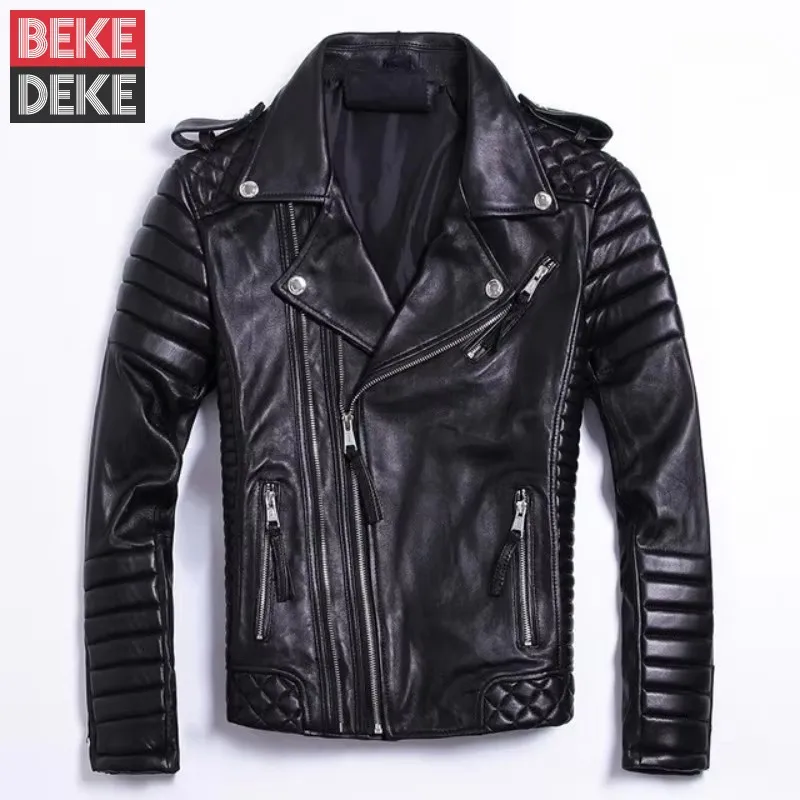
Metro Cloak offers several options in these flattering styles, including a range of mens pea coats that feature properly proportioned cuts and mens leather coat options in various lengths suitable for shorter frames.
Length Pitfalls: What to Avoid and Why
Just as important as knowing what works is understanding what to avoid. These length mistakes can significantly undermine your appearance:
Below-knee coats:
* Creates the dreaded “drowning in fabric” effect
* Visually cuts your body in half, making legs appear disproportionately short
* Overwhelms smaller frames with excess material
* Makes movement awkward and uncomfortable
Mid-calf coats:
* Perhaps the most problematic length for shorter men
* Creates extremely awkward proportions that emphasize lack of height
* Makes your legs appear stubby and your upper body oversized
Oversized/boxy cuts:
* Compounds length problems with width issues
* Creates the appearance of a child wearing adult clothing
* Obscures any natural definition in your silhouette
Too-short coats:
* When jackets ride up above the hip, they create a top-heavy appearance
* Can make your torso look disproportionately long
* Often signal poor fit rather than intentional styling
Uneven hemlines:
* When front and back lengths differ significantly, they create visual confusion
* Disrupts clean lines that would otherwise elongate your frame
Understanding the differences between short vs long coats helps you recognize why certain styles flatter while others detract from your appearance. The goal isn’t just to avoid mistakes but to deliberately choose lengths that enhance your natural proportions.
Critical Fit Elements Beyond Length: Creating the Complete Package
While length is crucial, other fit elements are equally important for creating a flattering coat silhouette:
Shoulder Fit
The shoulder seam should end precisely at your natural shoulder edge with minimal padding. Excessive shoulder width creates a “hand-me-down” appearance that instantly signals poor fit. For shorter men, this is particularly important as oversized shoulders create a drooping effect that diminishes your stature.
Sleeve Length
Ideally, coat sleeves should end at your wrist bone, allowing 1/4-1/2 inch (0.6-1.3 cm) of shirt cuff to show. Too-long sleeves create a sloppy appearance and can make your arms look shorter than they are. When trying on coats, extend your arms forward to ensure sleeves don’t ride up excessively.
Body Fit
The coat body should follow your natural silhouette with a slight taper. There should be enough room for light layering but not so much that excess fabric bunches or billows. You should be able to button the coat comfortably without pulling or gapping.
Armhole Height
Higher armholes create a cleaner silhouette and better movement. Lower armholes add bulk and restrict mobility, making the entire coat look less refined. This subtle detail significantly impacts how polished the final look appears.
Proportional Details
Elements like button stance, pocket placement, and lapel width should be scaled appropriately for your frame. For instance, the top button or closure point should hit at your narrowest part, typically just below the chest, to create flattering lines.
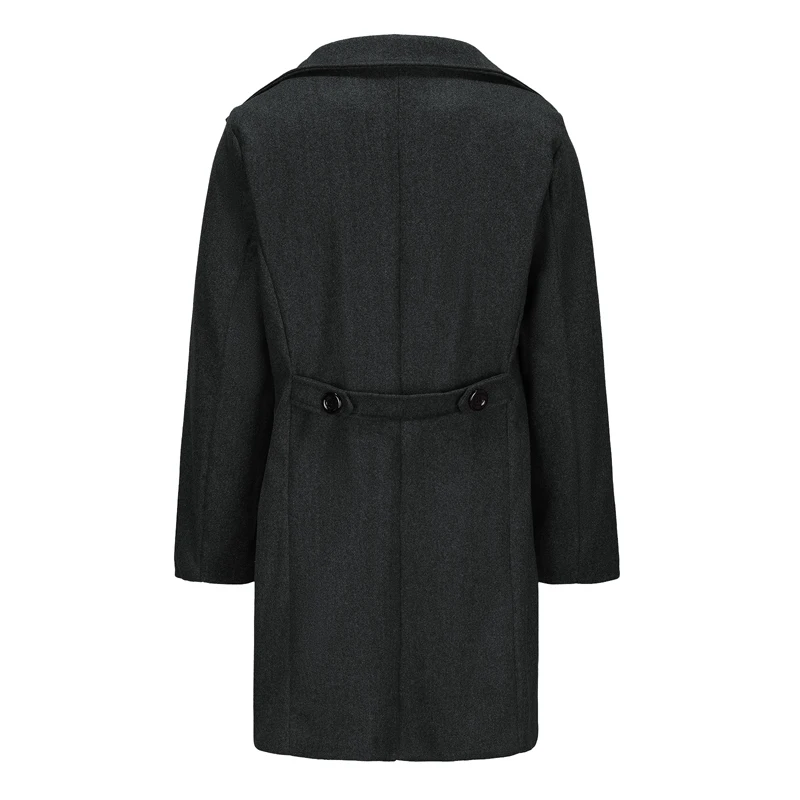
Exploring options like mens wool car coat and mens topcoats from quality retailers gives you the opportunity to find pieces with these important fit elements already in place.
Mens Double Breasted Pea Coat, Mens Wool Blend Coat, Mens Wool Pea Coat
Price range: $136.84 through $157.36 Select options This product has multiple variants. The options may be chosen on the product pageMens Double Breasted Pea Coat, Mens Hooded Winter Coat, Mens Quilted Coat
Price range: $81.00 through $108.48 Select options This product has multiple variants. The options may be chosen on the product pageMens Long Overcoat, Mens Topcoats
Price range: $189.40 through $196.88 Select options This product has multiple variants. The options may be chosen on the product pageMens Leather Coat, Mens Long Leather Coat
Price range: $225.22 through $235.58 Select options This product has multiple variants. The options may be chosen on the product page- Price range: $177.52 through $182.44 Select options This product has multiple variants. The options may be chosen on the product page
Mens Black Leather Coat, Mens Leather Coat
Price range: $181.52 through $197.20 Select options This product has multiple variants. The options may be chosen on the product page
The Transformative Power of Tailoring: Customizing Your Perfect Coat
When off-the-rack coats don’t provide the perfect fit, tailoring becomes your most powerful ally. Here’s what you need to know about customizing coats for your frame:
What Can Be Successfully Altered:
* Sleeves: Can usually be shortened by 1-2 inches (2.5-5 cm)
* Overall length: Most coats can be shortened by 2-3 inches (5-7.6 cm)
* Waist: Can be taken in to create better shape
* Body: Side seams can be adjusted for a slimmer fit
What’s Difficult or Impossible to Alter:
* Shoulders: Major shoulder adjustments are extremely costly and often unsuccessful
* Dramatic length changes: Shortening by more than 3-4 inches can affect coat balance
* Collar adjustments: These are complex and may not be worth the investment
Cost-Benefit Considerations:
* Sleeve shortening: $30-75
* Coat length adjustment: $50-120
* Waist suppression: $40-60
* Complete coat reshaping: $100-200+
When deciding whether to tailor a coat, consider the original quality and construction. Higher-quality coats are generally worth the investment in alterations, while budget options might be better replaced altogether. Finding a tailor who specializes in outerwear (not just suits) is crucial for success.
With proper tailoring, you can transform coats that have the right style and fabric but wrong proportions into pieces that follow the guidelines in a mens coat length style guide and look custom-made for your frame.
Style Strategies: Creating Visual Height Beyond Perfect Length
While proper coat length forms the foundation, these additional style strategies can further enhance the perception of height:
Monochromatic Outfitting: Creating a single color column from shoulders to shoes eliminates visual breaks that can make you appear shorter. Navy, charcoal, or black tonal outfits are particularly effective.
Strategic Layering: Opt for thin, smooth layers rather than bulky ones. A fine merino sweater under a coat creates less bulk than a thick cable knit, maintaining clean lines.
Complementary Trouser Choices: Select trousers with a medium to high rise that sits at your natural waist, not below it. This visually lengthens your legs, especially when matched with the right coat length.
Pattern Selection: Vertical patterns like fine pinstripes or herringbone visually elongate your frame. Avoid large patterns or horizontal stripes that can disrupt vertical flow.
Proper Footwear: Shoes with slightly elevated heels or boots can add subtle height while complementing coat styles. Ensure your trousers break cleanly over your shoes without excessive pooling.
Proportion-Enhancing Accessories: Vertical accessories like scarves worn long rather than bundled can create elongating lines. Consider hat styles that add slight height rather than flat caps.
These strategies work hand-in-hand with finding the perfect coat length for every body type. When properly executed, they create an overall impression of greater height that appears completely natural.
Shopping Smart: Finding Well-Proportioned Coats for Shorter Men
Finding well-proportioned coats requires strategic shopping approaches:
Brands That Work Well for Shorter Frames:
* Several mainstream retailers now offer “short” sizes specifically designed with adjusted proportions
* Specialty brands focused on smaller frames often feature naturally shorter coat lengths
* European and Asian brands frequently cut their coats with shorter proportions than American brands
Key Measurements to Know:
* Your exact shoulder width (measure from shoulder point to shoulder point)
* Your ideal sleeve length (measure from shoulder seam to wrist bone)
* Your preferred coat length (based on the guidelines in earlier sections)
* Your chest measurement at the fullest point
Shopping Strategies:
* Try before buying whenever possible
* When shopping online, check detailed size charts and look for models’ heights in product descriptions
* Consider shopping in the young men’s department for certain casual styles
* Be prepared to factor tailoring costs into your purchase budget
* Look for natural shoulder construction rather than excessive padding
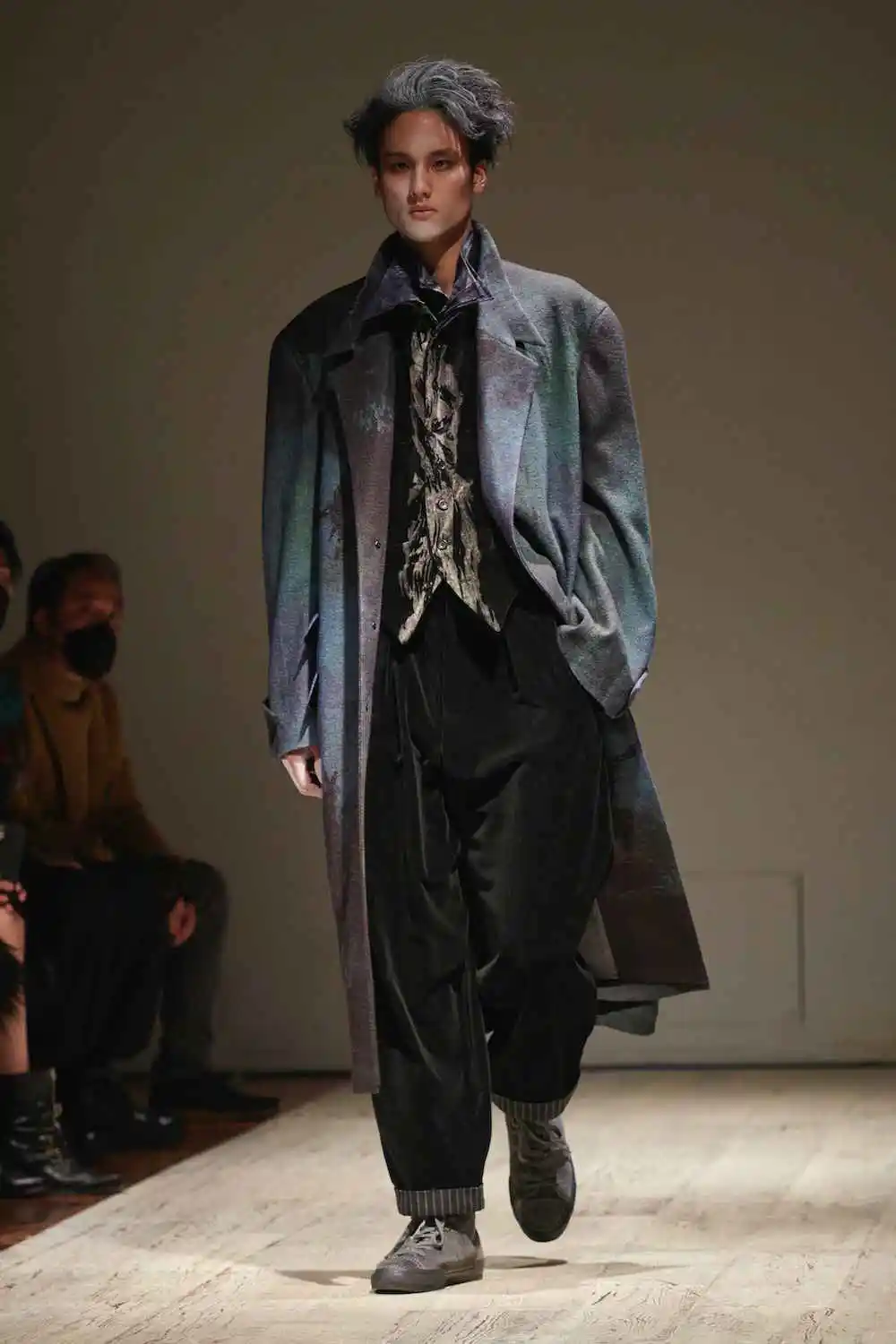
When selecting a coat, color can also impact how proportions are perceived. Learning about best colors for classic fit pea coats can help you make choices that enhance both your complexion and perceived height.
Frequently Asked Questions About Coat Length for Shorter Men
Can short men ever wear long coats?
Yes, but with careful consideration. A well-fitted longer coat that ends just above the knee can work if it’s perfectly tailored, has clean lines, and is paired with slim trousers. Avoid anything that falls below the knee as this will almost always create unflattering proportions.
How do I determine my ideal coat length?
A quick rule of thumb: stand with your arms at your sides and your coat length should fall somewhere between your knuckles (for shortest option) and mid-thigh. For most shorter men, the sweet spot is where the coat just covers your seat but doesn’t extend much beyond that point.
Should different seasons affect coat length?
Yes, slightly. Winter coats can be a bit longer (mid-thigh to above-knee) for practical warmth, while spring/fall coats work best at hip to mid-thigh length. Summer jackets are most flattering when hip-length or slightly shorter for a casual look.
Are trench coats suitable for shorter men?
They can be, but require careful selection. Look for shorter trench styles that hit mid-thigh rather than below the knee. The belt should sit at your natural waist, and consider having the length tailored if necessary.
How do I know if my current coats fit properly?
Check these points: shoulders should align with your natural shoulder edge, you should be able to comfortably button the coat without pulling, sleeve length should show about 1/4-1/2 inch of shirt cuff, and the bottom hem should create a flattering proportion with your legs.
Seasonal Considerations: Adjusting Coat Length Through the Year
Coat length preferences naturally shift with the seasons, balancing style with practicality:
Winter Coats
For maximum warmth, winter coats can be slightly longer than your standard pieces, but should still maintain the above-knee rule. Mid-thigh to just above the knee works well, especially when paired with proper layering. Heavier materials like wool and down require more precise tailoring to avoid bulkiness.
Spring/Fall Transition Coats
Mid-thigh length is ideal for these transitional seasons, offering versatility across various weather conditions. Lighter materials drape better, creating cleaner lines that flatter shorter frames. Car coats and lighter topcoats in this length range provide the perfect balance.
Summer Lightweight Jackets
Hip-length is preferred for warm-weather options like lightweight bomber jackets, harringtons, or casual blazers. These shorter lengths complement the typically more casual summer attire and maintain proportion in lighter fabrics.
When considering seasonal options, perfect winter coat length might differ slightly from what works in warmer months, but the fundamental proportion principles remain consistent year-round.
Confidence Through Proper Fit: The Psychological Impact of Well-Tailored Outerwear
The impact of wearing properly fitted outerwear extends far beyond mere aesthetics. When your coat fits your proportions correctly, it creates a psychological shift that affects both how you feel about yourself and how others perceive you.
A well-tailored coat that respects your proportions eliminates the self-consciousness that often comes with ill-fitting clothes. Rather than constantly adjusting or feeling awkward about your appearance, you can focus on the moment, whether it’s a business meeting, social gathering, or casual outing.
Research in fashion psychology suggests that properly fitted clothing significantly boosts confidence levels and perceived competence. For shorter men, this confidence boost is particularly valuable as it helps overcome any height-related insecurities.
Remember that quality and fit will always trump trends. A classic, well-proportioned coat represents an investment in your appearance that pays dividends in confidence and presence, regardless of your height.
Building a Versatile Coat Collection for Different Occasions
For shorter men looking to build a complete and versatile coat wardrobe, consider these essentials:
Business and Formal Settings
* A mid-thigh topcoat in navy, charcoal, or camel
* A well-fitted car coat for business-casual environments
* Consider structured shoulders and clean lines for maximum authority
Casual Everyday Options
* A hip-length bomber or leather jacket for ultimate versatility
* A denim or field jacket for weekend casual wear
* A lightweight packable jacket for travel and uncertain weather
Special Occasion Needs
* A slightly more formal overcoat (above-knee length) for evening events
* Consider darker colors and luxurious fabrics for formal settings
When building your collection, prioritize versatility first—invest in pieces that can work across multiple settings before adding more specialized items. Focus on perfect fit rather than quantity, as three well-fitted coats will serve you better than six that compromise on proportion.
By applying these principles consistently across your outerwear collection, you’ll create a cohesive wardrobe that enhances your appearance regardless of your height, ensuring you always present your best self to the world.

